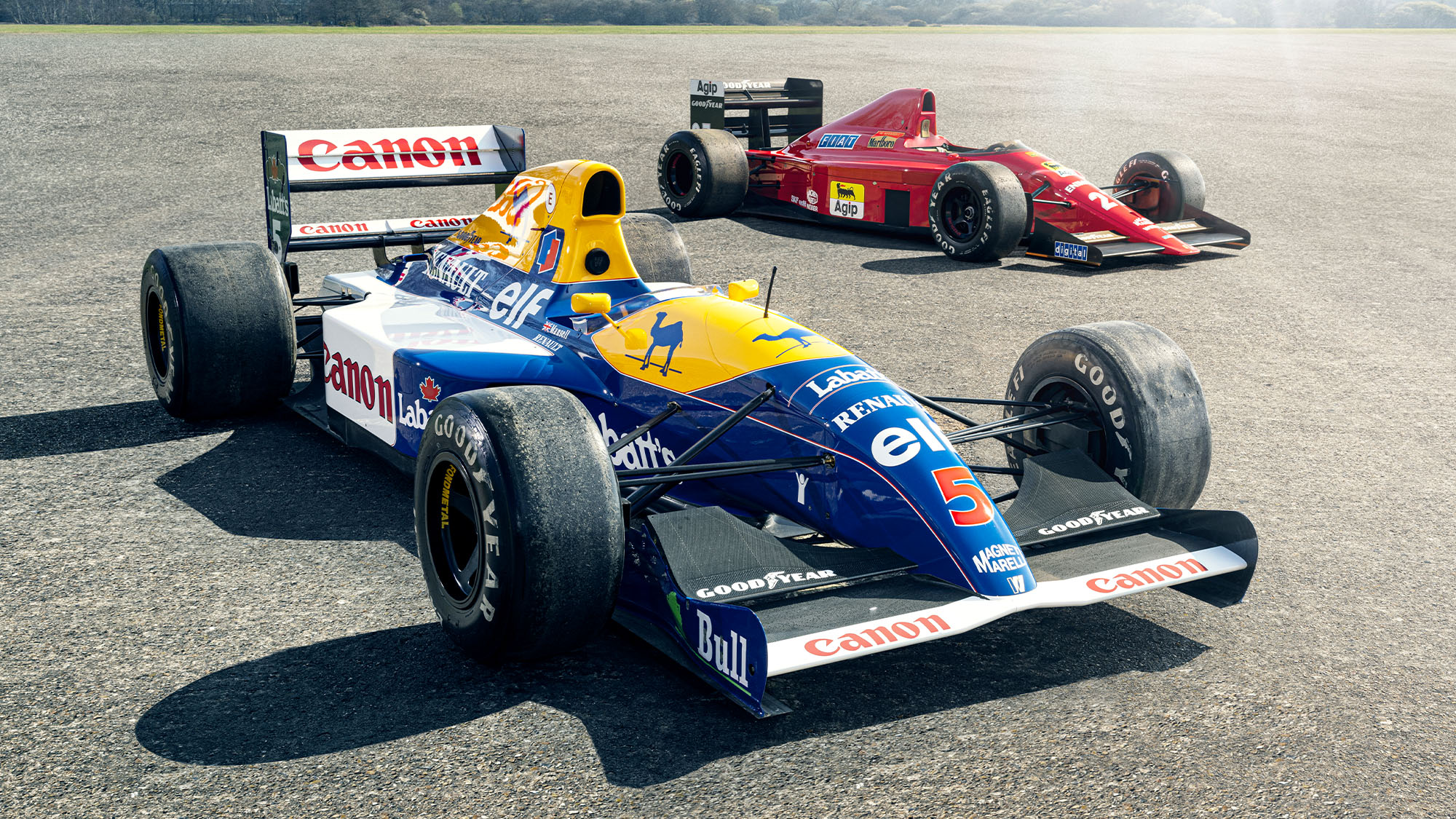Mansell's winning F1 machines: up close with momentous Ferrari and Williams
Which would you prefer, the famous Red 5, or the red one that’s not No5, but is no less significant? Between this Ferrari and Williams, Nigel Mansell celebrated a combined seven grand prix wins. And now they’re up for auction. Damien Smith takes a look at the lots
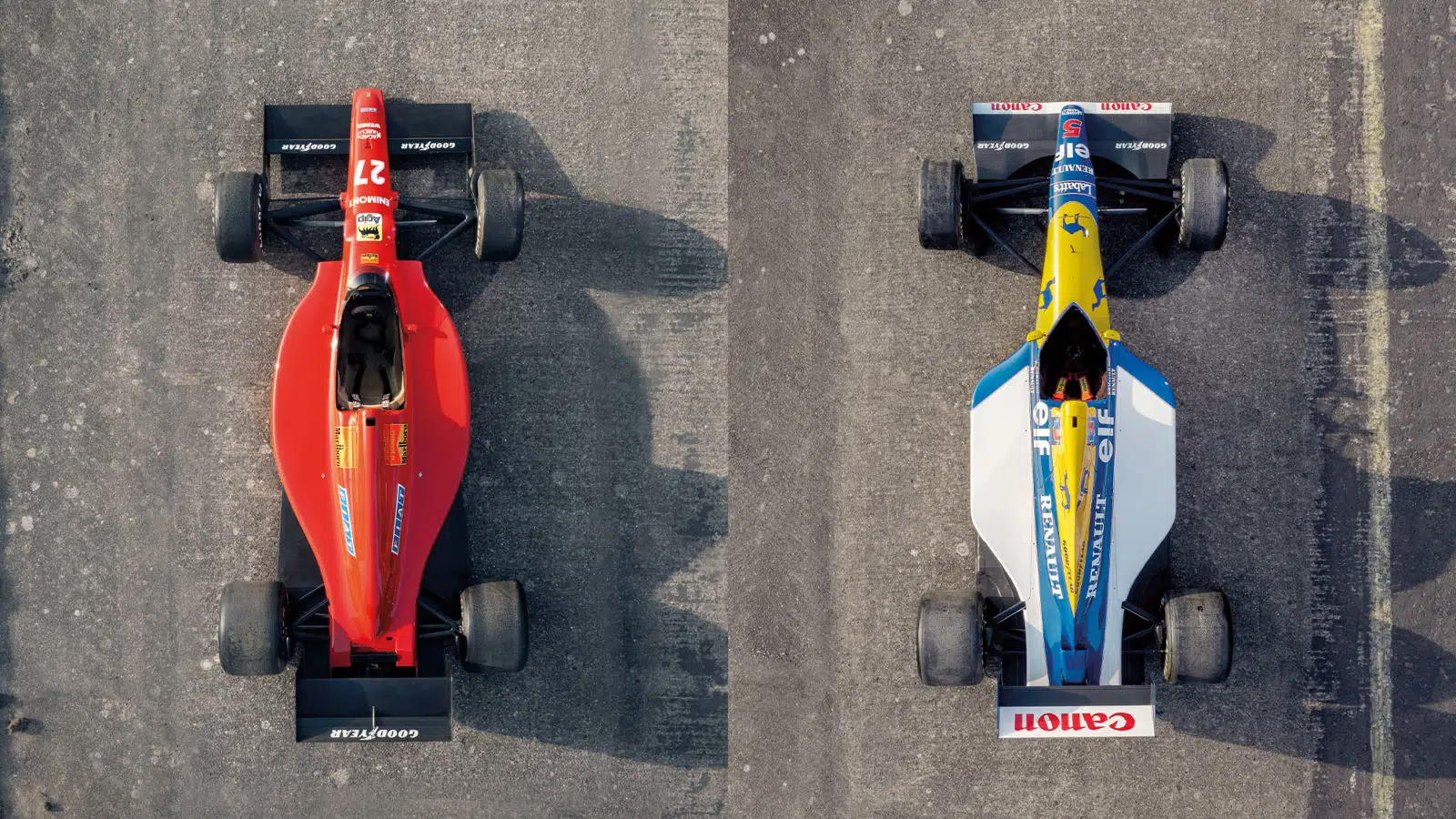
Lee Brimble
Harsh as it may sound of a grand prix driver who scored 31 victories from 187 starts, Nigel Mansell could so easily have landed the unwanted label of Formula 1 ‘nearly man’ without that season of domination with the tech-laden Williams FW14B in 1992. He’d come so close in 1986, blameless for an agonising title loss through a Goodyear tyre failure in Adelaide, then blew it himself in ’87 with a back-injuring practice crash at Suzuka.
Further years of promise unfulfilled then rolled out, as represented by the pair of F1 cars Mansell has now chosen to sell from his own collection, via the RM Sotheby’s Monaco auction on May 14. Great F1 cars in their own right, the 1989 Ferrari 640 and analogue-spec Williams FW14 from 1991 also represent key milestones in the epic journey of a true-blue British hero towards that long-desired status of undisputed champion of the world – a title his pure, instinctive talent and trademark ‘big-balls’ bravery fully deserved.
Mansell came to both seasons at something of a low ebb. He arrived at 1989 as an Englishman in Maranello, Enzo Ferrari’s last signing before his death, in the wake of a bit-part season driving a make-do Williams powered by a Judd V8. But now the lustre
of Ferrari and John Barnard – architect of McLaren’s glories – promised deliverance, as much for the parched Prancing Horse as Mansell in the wake of a title drought that dated back 10 years.
Barnard’s 640 remains one of the most elegant and beautiful F1 creations, even if it was labelled by Italy’s remorseless press as Il Papera – the duck, thanks to the bill at the tip of its long nose. It was also bristling with innovation, not only the ground-breaking paddle-shift semi-automatic gearbox, but also Barnard’s torsion bar front suspension, a no-compromise alternative to traditional coil springs. Both set a path the rest would eventually follow. If only the 640 had lasted as well as it looked.
1989 Ferrari 640 / chassis no 109 |
|||
| Brazilian Grand Prix San Marino Grand Prix Monaco Grand Prix Mexican Grand Prix US Grand Prix |
1st Ret Ret Ret Ret |
Canadian Grand Prix British Grand Prix German Grand Prix Hungarian Grand Prix Australian Grand Prix |
DSQ 2nd 3rd 1st Ret |
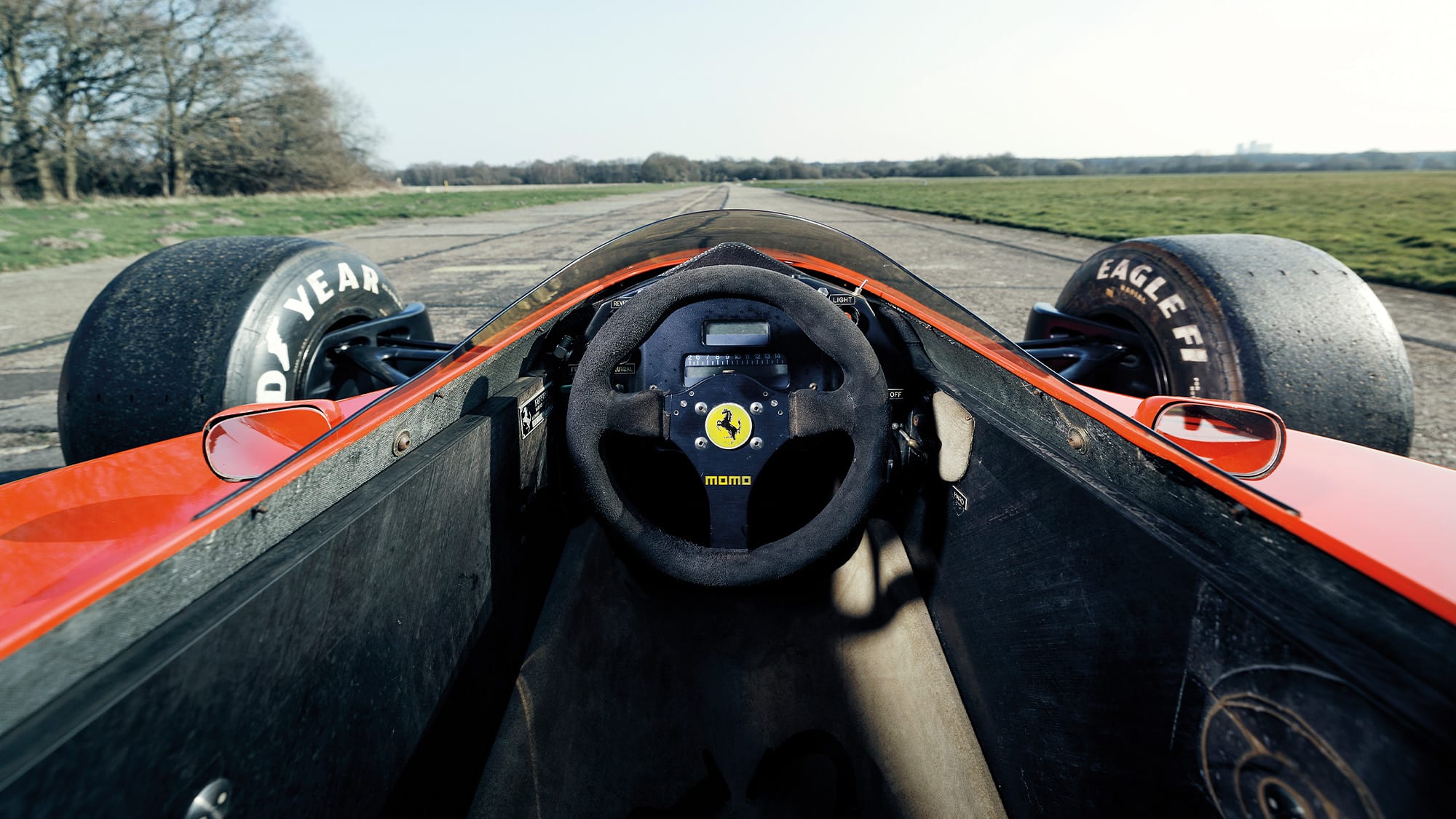 |
|||
Barnard was bruised from the political skirmishes he’d survived since joining Ferrari from McLaren in November 1986 (see page 114). Weakened and under pressure without Enzo’s protection, the semi-auto ’box was a risk the Fiat suits didn’t want to take – although helpfully Mansell backed it. This needed to work if Barnard’s (first) spell at Ferrari was to last into 1990.
It didn’t, on both counts. But boy, how the 640 soared when it lasted. Reliability had been atrocious right up to the green lights in Rio, so much that Mansell had booked an early flight home via a British Airways captain on the grid. His subsequent “fairy-tale” debut victory remains a shock for the ages. Mansell was waiting for inevitable failure when the ‘flappy-paddle’ steering wheel he’d initially struggled to adapt to began working loose. A pitstop for a new one, slammed on by Joan Villadelprat with such force it drew the chief mechanic’s blood, only added to certainties it couldn’t last. Somehow it did, as Mansell scorched back past Alain Prost’s troubled McLaren for one of his greatest wins.
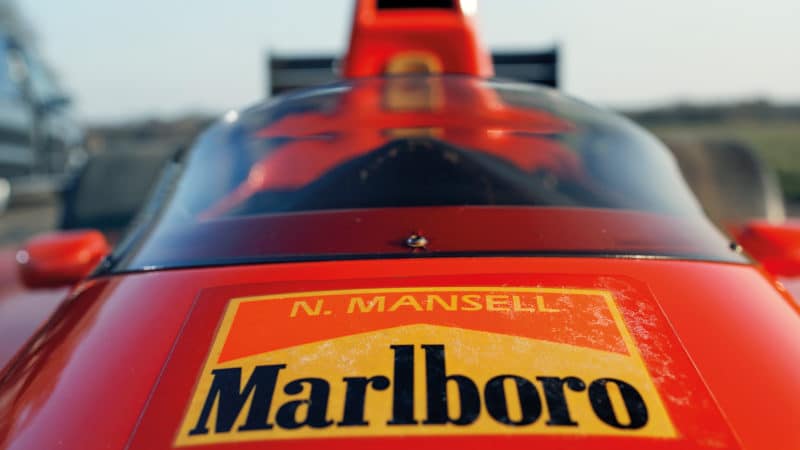
Confusing, complicated, often unreliable, but nevertheless revolutionary, Ferrari’s 640 pioneered racing technology with its semi-automatic gearbox. Mansell ensured its place in history with his win in Brazil
Lee Brimble
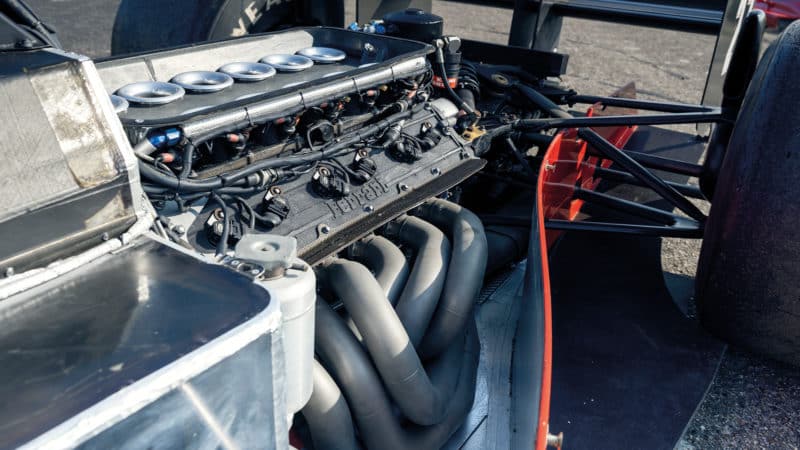
Lee Brimble
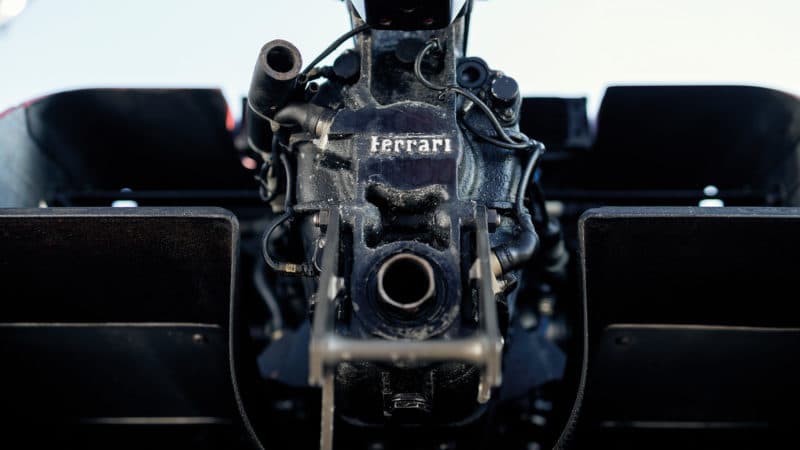
Lee Brimble
Another followed much later that summer when he came from 12th to pick Ayrton Senna’s pocket at the Hungaroring. It’s a huge shame, then, that the lows far outnumbered the highs.
Team-mate Gerhard Berger’s fiery escape from a horror crash caused by a wing failure at Imola’s fearsome Tamburello shook Barnard to his core. But it was the lack of reliability that boiled Mansell’s frustrations. The duo failed to finish 21 times out of 30 starts, although when they did both tended to score well. Mansell’s double-error in Portugal – reversing down the pitlane after a botched stop, then colliding with Senna as he was being black-flagged – at least opened the door to Berger’s only win that season. But had the 640’s Achilles heel been discovered earlier, Ferrari might well have threatened McLaren. Barnard’s gearbox wasn’t the problem and neither directly was Magneti Marelli’s overheating alternator. The problem was eventually sourced, by chance, to the V12 engine and the belt connected to the alternator jumping and slipping on its pulley.
Instead of fighting for a title, Barnard left for Benetton, Berger for McLaren and Prost switched the other way, thrashing Mansell in 1990 – on-track, but also off if you believe Nigel’s version. The Ferrari dream ended with a whimper instead of a roar from Il Leone, amid a hair-trigger career retirement after mid-race disappointment at Silverstone and a rapid U-turn once Williams came calling – only after Jean Alesi backed away from the drive of his life for his own Ferrari nightmare and Senna re-signed for McLaren. Third-choice Mansell had a reputation to rebuild in 1991.
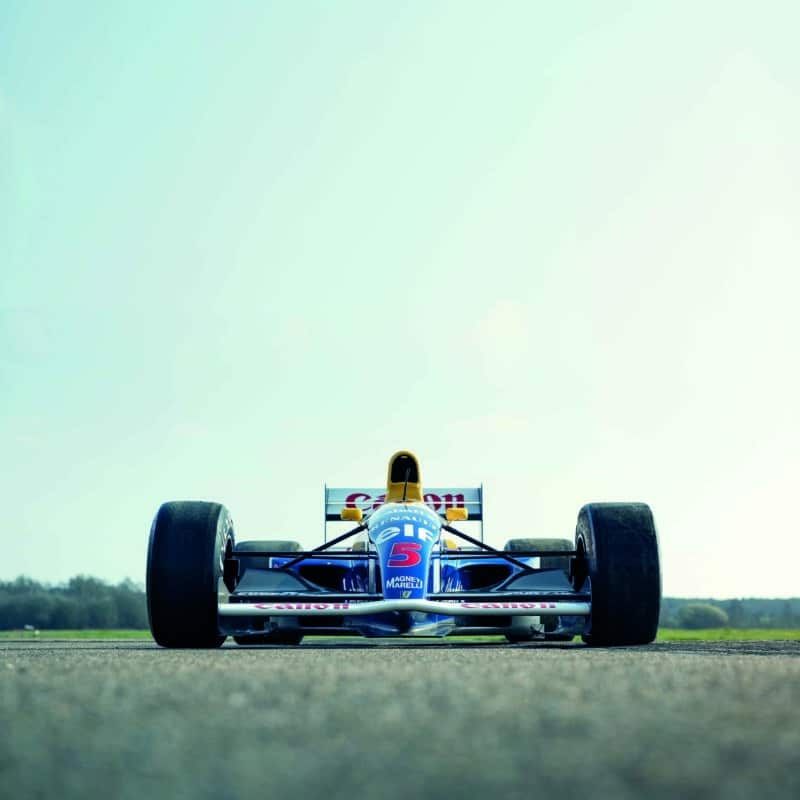
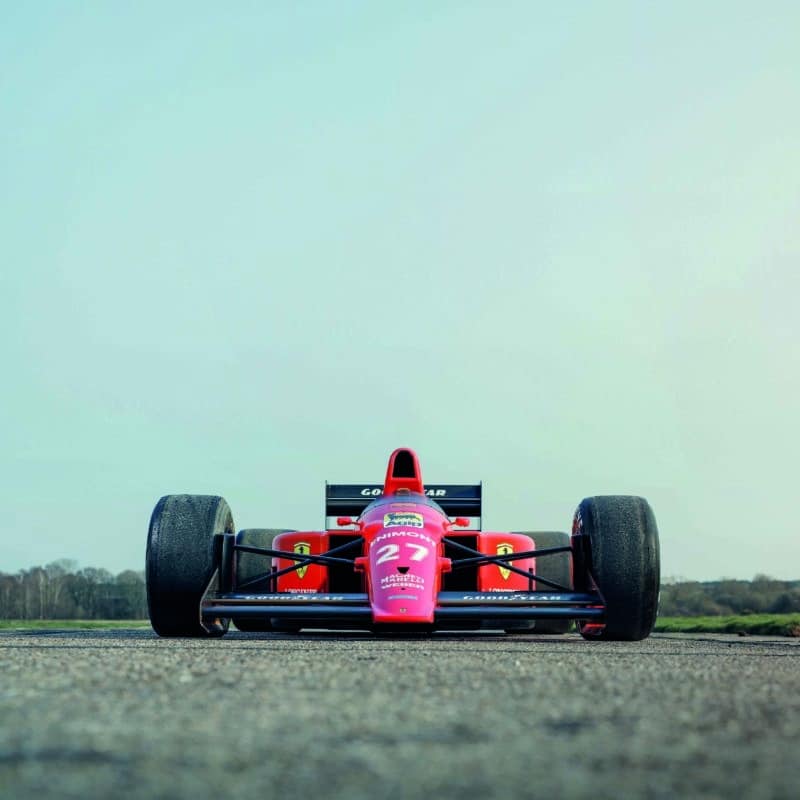
It didn’t start well. Senna won the first four races as Williams struggled with its own semi-auto gearbox gremlins. Mansell didn’t score until round four at Monaco.
Adrian Newey had joined Williams the day after Mansell’s (faux) retirement at Silverstone, bringing with him the ideas he’d developed on his ground-breaking Leyton House designs. Strip the FW14 of its livery and the resemblance to the turquoise cars is obvious: the V-shaped chassis, small cockpit opening, the shape of the engine cover, the front wing and its extended endplates.
1991 Williams FW14 / chassis no FW14-15 |
|||
| French Grand Prix British Grand Prix German Grand Prix Hungarian Grand Prix Belgian Grand Prix |
1st 1st 1st 2nd Ret |
Italian Grand Prix Portuguese Grand Prix Spanish Grand Prix Japanese Grand Prix Australian Grand Prix |
1st DSQ 1st Ret 2nd |
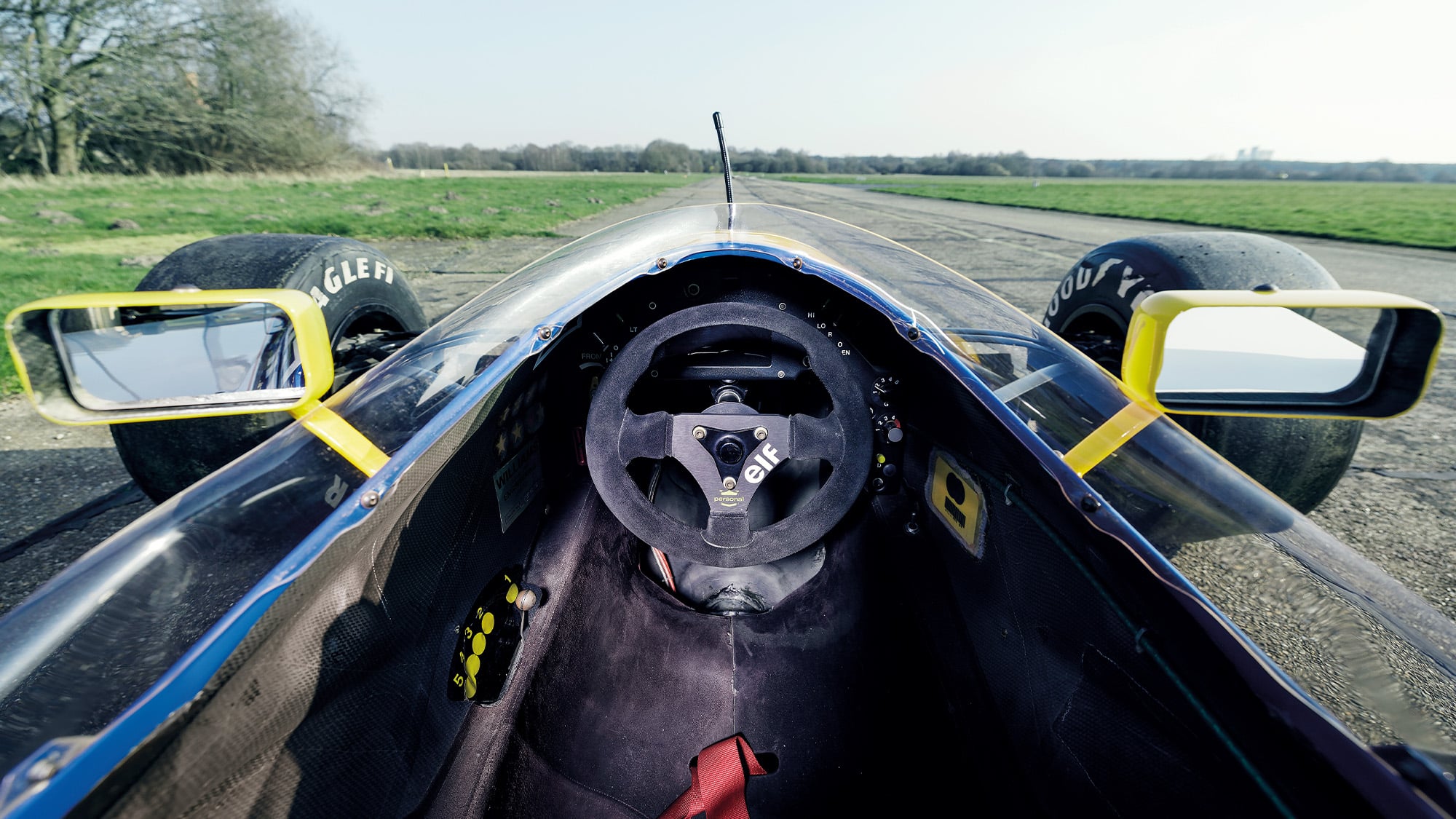 |
|||
Newey’s problem was the “bulky” Williams gearbox. “On FW13, the transmission was a transverse, introduced first on the FW12 in 1988,” says Sir Patrick Head. “In 1989, Ferrari ran a semi-automatic where the gear selection was managed via a pneumatic or hydraulic-powered system, controlled via software. We tested a transmission with a hydraulic-powered, barrel-driven gear selection, controlled via command from the steering wheel. Adrian said the test transmission for our semi-auto was not the optimum shape for the aerodynamics, so we tested with the intermediate gearbox on the FW13B, and designed a new transmission, with semi-auto gear selection, but with a shape more suitable for the aerodynamic requirements. It was referred to as TG3: Transverse Gearbox 3.”
Its failures were “due to a lack of positional control once the transmission was warm, very simply solved once the cause was identified by closing tolerances”, says Head. From Canada, FW14 was the clear pace-setter – only for Mansell to embarrass himself by losing his engine while waving to the crowd on the final lap. As he initially neglected to change down a gear at the hairpin, the engine dropped below 2000rpm and stalled. A bigger battery was fitted thereafter to spare such blushes in the future.
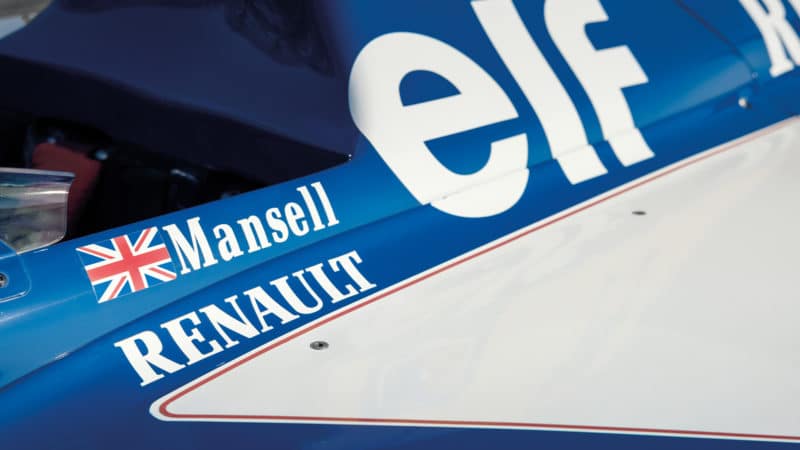
It may largely have played second fiddle to Ayrton Senna’s McLaren, but the FW14 laid the foundations for Mansell’s epic world title charge the following season in the active-ride FW14B
Lee Brimble
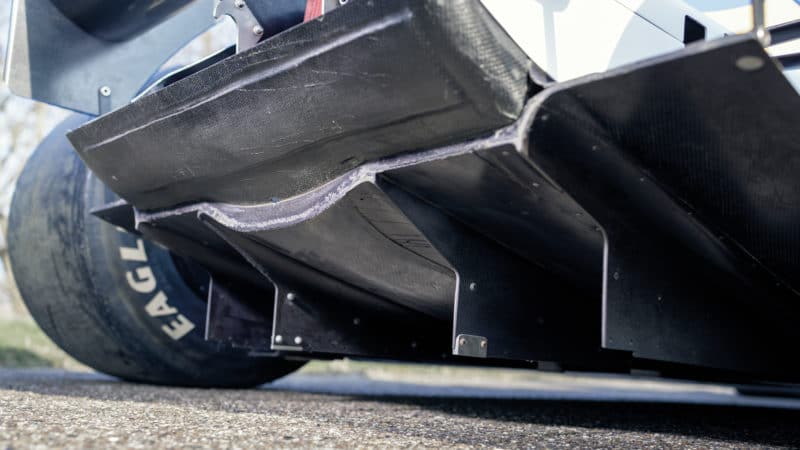
Lee Brimble

Lee Brimble
A balm for the team’s bitter disappointment followed when FW14 won in Mexico – but team-mate Riccardo Patrese led the 1-2, ‘Red Five’ having been delayed by engine troubles. The result was only in keeping with early season form. Against expectation, Patrese outqualified Mansell in each of the first seven races.

McLaren hit back with a more powerful Honda V12 and a raft of new parts, but Mansell remained in the hunt despite new embarrassment in Portugal. This time ‘finger trouble’ at a pitstop lost him a wheel, and although he bounced back in a famous side-by-side duel with Senna in Barcelona his title challenge ended in a limp moment of understeer at Suzuka’s Turn 2. Never mind.
While Mansell and Patrese raced through the summer, test driver Damon Hill was helping perfect an active-ride masterpiece. Senna was champion for a third time, but knew all too well he’d be in the wrong car for ’92. That year, Mansell’s retribution was complete and now, finally, his nearly days were over.
